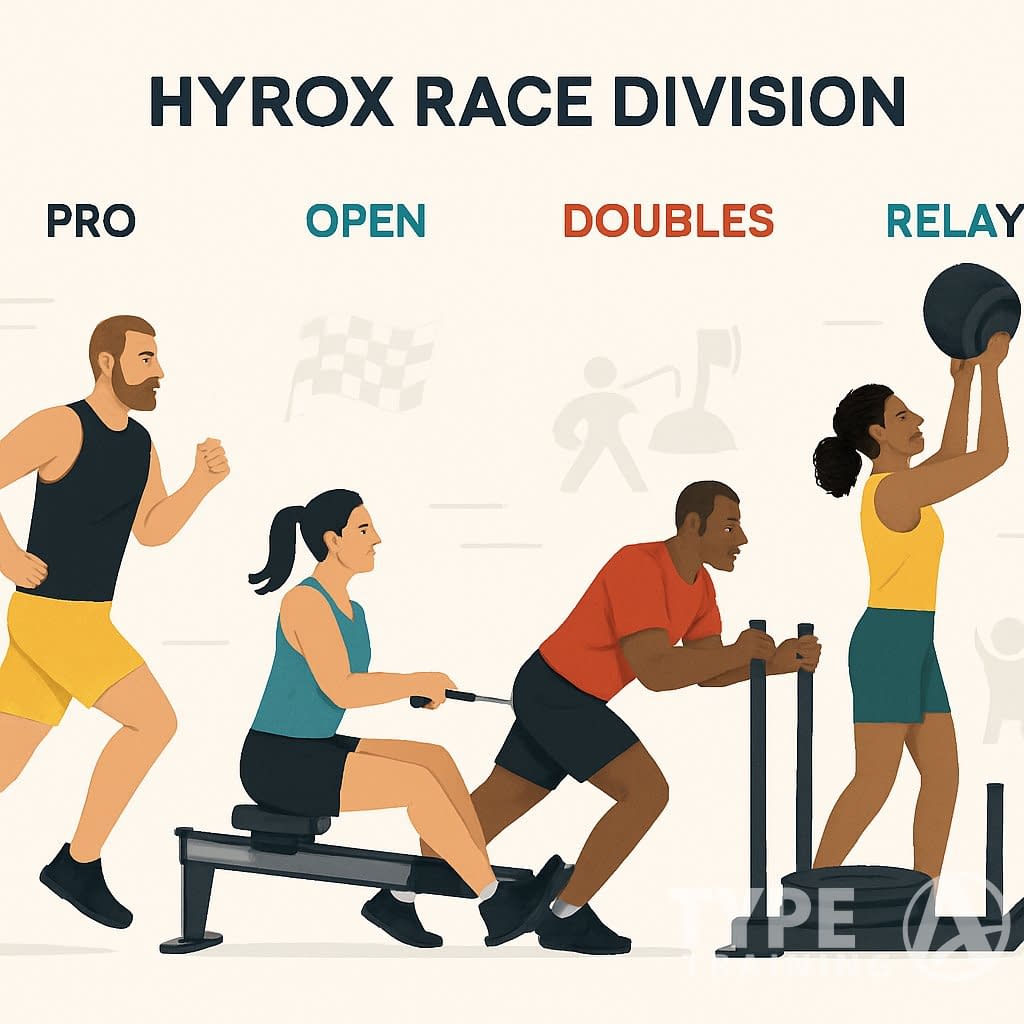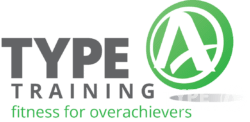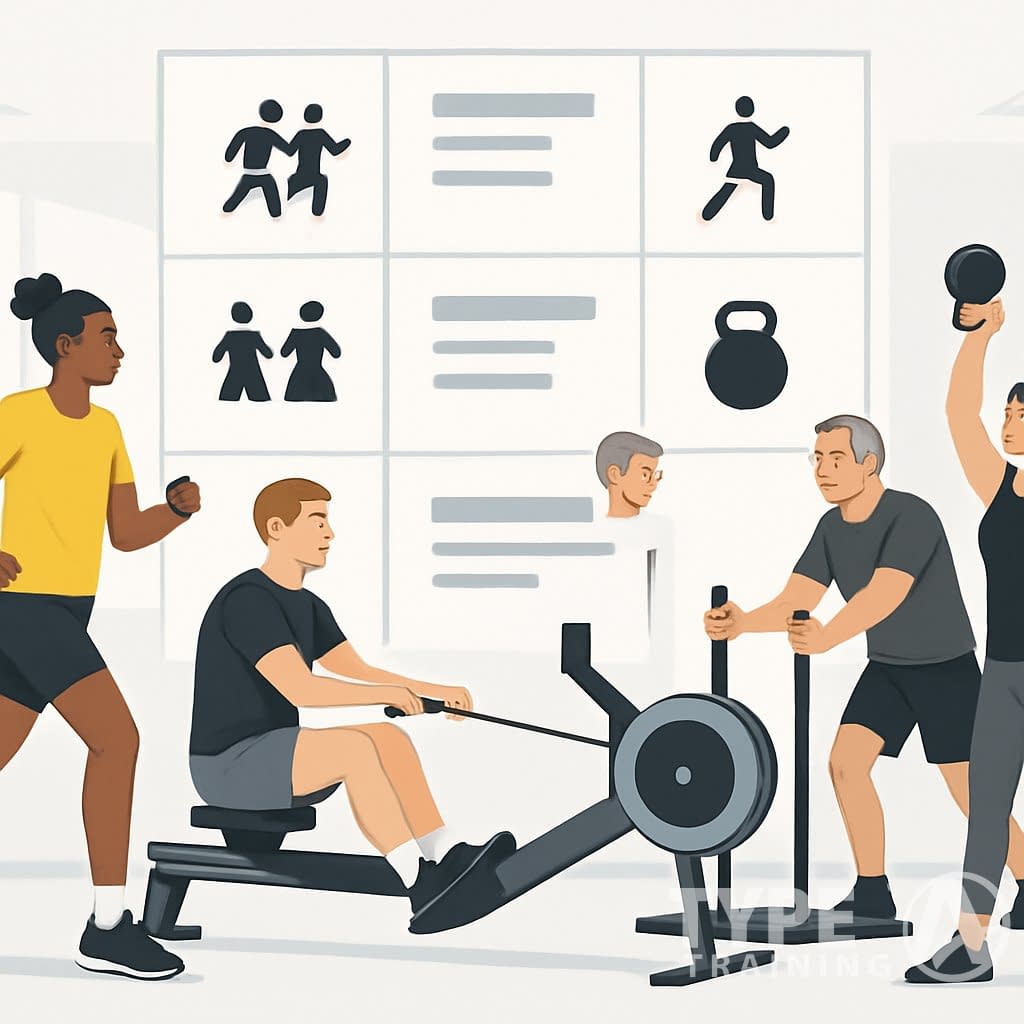Choosing the right HYROX division can shape your entire race experience. With options from solo challenges to team formats, you get to pick what matches your fitness level and ambitions within the various HYROX Divisions. Understanding the different HYROX Divisions is crucial for a successful event.
Pick a division that balances your current ability with the challenge you’re after.

You can go solo in the Open or Pro categories. Or you could team up in Doubles, Mixed Doubles, or share the grind in a Relay.
Popular posts:
Each option comes with its own weights, workout standards, and strategies. The best choice depends on how you want to train and show up on race day.
Understanding these categories helps you set realistic expectations. When you know what each division demands, you can show up with a clear plan and the right mindset.
Key Takeaways
- HYROX has divisions for all fitness levels and goals
- Every division features specific workout standards and formats
- Picking the right category helps you train smarter and show up with confidence
Overview of HYROX Race Divisions

HYROX is a global fitness race that blends running with functional strength exercises. Each division tweaks the weights, format, or team setup so you can compete at your level and understand the unique aspects of the HYROX Divisions. Familiarity with each of the HYROX Divisions enhances your race preparation.
What Is HYROX?
HYROX is a standardized indoor fitness race. You’ll tackle 8 workout stations, each separated by a 1 km run, so that’s 8 km running plus functional movements.
The stations test skills like sled pushing, rowing, lunges, and burpees. Since the layout stays the same at every event, you can compare your performance to athletes worldwide.
HYROX welcomes all fitness levels. Beginners, recreational folks, and elite competitors all race under the same structure, but divisions adjust the difficulty with weights and team options.
Understanding HYROX Divisions
HYROX offers several divisions, so you can pick what fits your fitness and competition style. The main categories are:
- Open – Standard weights and reps, good for most people
- Pro – Heavier weights for advanced athletes
- Doubles – Two athletes split the workout load, but run together
- Relay – Four athletes, each does 2 runs and 2 stations
You’ll also find men’s, women’s, and mixed team options. That means you can go solo, with a partner, or as part of a group.
You might start with Open, then move to Pro or team formats as you get stronger and fitter.
Key Differences Between Divisions
The main differences between divisions are weights, workload sharing, and competition style.
- Open uses lighter weights, so it’s approachable for most athletes.
- Pro turns up the intensity with heavier sled pushes, wall balls, and more.
- Doubles splits the exercises, which helps with fatigue but demands teamwork.
- Relay breaks the race into segments, so it’s more about speed and strategy.
There’s a division for pretty much every type of athlete. Solo challenge? Team effort? HYROX makes it easy to find your lane.
HYROX Open and Pro Categories
HYROX splits athletes into divisions that fit different fitness levels and goals. The big differences are weight loads, competition standards, and performance expectations.
HYROX Open: Who Is It For?
The HYROX Open division focuses on accessibility. You’ll complete the same 8 workouts and 8 runs as everyone else, but with lighter weights and more manageable standards.
It’s a solid starting point if you’re new to HYROX or still building strength and endurance. Lots of recreational athletes go for Open to get the full race experience without the heavier demands of Pro.
Men and women have different weight standards in Open. For example, sled pushes and pulls are lighter compared to Pro.
This lets you focus on pacing, transitions, and just learning the race flow. If you want to test your fitness in a structured race without needing elite prep, Open is your spot.
HYROX Pro: Advanced Competition
The HYROX Pro division ups the challenge with heavier weights on stations like sled push and farmer’s carry. The race distance stays the same, but you’ll need more strength.
Pro is really for advanced athletes with solid conditioning and strength. Training for Pro means you’ll need to handle heavier resistance and still keep up your running pace.
Pro athletes usually have their eyes on global rankings. If you want to see how you stack up internationally, this is the division.
Switching from Open to Pro takes consistent training and a bit of self-assessment. Plenty of athletes use fitness benchmarks to decide if they’re ready for Pro.
Elite 15: The Pinnacle of HYROX
The Elite 15 is HYROX’s top tier. Only the fastest 15 men and 15 women worldwide qualify, based on official race results.
You can’t just sign up for Elite 15—you have to earn your spot through Pro performance. It’s a small, exclusive field.
Elite 15 races use Pro standards, but the pressure ramps up since you’re head-to-head with the best. Strategy and execution matter more than ever.
If you’re aiming for Elite 15, your training and results need to put you among the world’s best. That’s the gold standard in HYROX.
Doubles and Mixed Doubles Explained
In doubles, you team up and split the full HYROX race with a partner. Mixed doubles works the same way, but adjusts weights so male and female athletes can compete together.
HYROX Doubles: Team Dynamics
In HYROX doubles, you and your partner take on the same course as individuals: 8 x 1 km runs and 8 workout stations. The twist? You can split the workout stations, but both of you have to run together.
That means pacing as a team is crucial. If one person is faster, the other has to keep up—no splitting up during runs.
You can divide the workout stations however you like. Maybe one of you takes more sled pushes, the other does more burpees. The rules just say the station has to get done.
Exploring the various HYROX Divisions available can help you make an informed decision based on your fitness level.
Success comes down to communication. Decide ahead of time how to split things up, and practice transitions so you don’t lose time.
Mixed Doubles: Unique Rules and Weights
HYROX mixed doubles use the same structure, but with lighter weights to account for the male-female pairing. It’s still tough, but more accessible.
For instance, sled pushes in men’s doubles might be 125 kg, while mixed doubles drop to about 75 kg. Other stations adjust similarly.
Both partners still have to run every kilometer together. The lighter weights make things fairer, but you’ll still want to plan out who does what.
Mixed doubles demand balance. If one partner struggles with endurance or strength, the other has to adapt. Training together helps you spot weak points and build your strategy.
Participating in the right division is essential to maximize your potential and enjoyment during the race. Each of the HYROX Divisions presents its own unique challenge.
This division is popular since it lets partners with different strengths take on the full HYROX challenge together.
Relay and Team-Based Divisions
Team formats let you share the work with others, but you’ll still complete the full race structure. These divisions test coordination, pacing, and transitions just as much as fitness.
As you engage with the HYROX Divisions, you’ll find each one tailored to different skill sets and fitness backgrounds.
HYROX Relay: Format and Strategy
In the HYROX Relay, you’re part of a four-person team. The race has eight 1 km runs and eight workout stations.
Each teammate does two runs and two workout stations—so about a quarter of the race each. This setup lightens your individual load, but makes teamwork and planning even more important.
You’ll want to assign stations based on strengths. Maybe the strongest person takes sled pushes, while someone else handles rowing or burpees.
Transitions can make or break your time. Enter and exit the workout zones quickly, and practice handoffs before race day so your team stays sharp.
The relay is a great way to try HYROX without taking on the whole race solo. You can focus on specific parts and still help your team.
Understanding the dynamics of all HYROX Divisions can help you prepare mentally and physically for your competition.
Comparing Relay vs. Doubles
Relay means four athletes, while Doubles is just two. In Doubles, you and your partner run all 8 km together and split every workout station. In Relay, each teammate runs 2 km and does two stations.
Here’s a quick look:
HYROX Divisions cater to a wide range of fitness enthusiasts, ensuring there’s a place for everyone.Whether you choose Open, Pro, or any of the other HYROX Divisions, knowing what to expect is key to your success.The depth of competition across the HYROX Divisions means you can continually challenge yourself and evolve as an athlete.
| Division | Team Size | Running | Workouts | Key Focus |
|---|---|---|---|---|
| Relay | 4 people | 2 km each | 2 stations each | Transitions, teamwork |
| Doubles | 2 people | 8 km together | Split all 8 stations | Shared pacing, workload balance |
Relay is about short, intense bursts and smooth transitions. Doubles is about steady pacing and communication since you’re together the whole time.
If you like quick, intense efforts and team play, Relay is probably your jam. If you want a shared endurance grind with one partner, Doubles is the way to go.
HYROX Stations and Workout Standards
Every HYROX race follows a set sequence of eight workout stations, each separated by a 1 km run. Judges enforce clear standards for every movement, so you’ll want to know what counts as a rep and how to pace yourself.
Overview of HYROX Stations
As you familiarize yourself with the standards of the HYROX Divisions, you can better gauge your performance against others.
HYROX always includes the same eight stations, in the same order. You’ll run 1 km before each station, so endurance matters as much as strength.
The stations are:
-
- SkiErg
- Sled Push
- Sled Pull
- Burpee Broad Jumps
Explore each of the HYROX Divisions to find where you fit in and how you can tap into your full potential.
- Rowing
- Farmers Carry
- Sandbag Lunges
- Wall Balls
Each movement has set distances, weights, or reps. For example, SkiErg and Rowing both require 1000 meters. Strength stations like sleds and wall balls use specific weight standards, which change depending on your division.
Sled Push and Sled Pull
Each of the HYROX Divisions offers a unique flavor of competition that can enhance your fitness journey.
The sled push and sled pull are two of the toughest HYROX stations. They’ll push your lower-body strength, grip, and all-around power to the limit.
In the sled push, you drive a weighted sled across a set distance. The weight changes depending on your division—Pro Men get the heaviest, while Open divisions use lighter loads.
Judges watch to make sure the sled fully crosses the marked line before it counts.
For the sled pull, you drag the sled toward you with a rope, then walk backward with it until it reaches the end. You have to pull hand-over-hand and stay behind the line.
Both stations demand good technique. If your form slips, you’ll waste energy fast.
Burpee Broad Jumps and Wall Balls
The versatility of the HYROX Divisions means that whether you prefer individual challenges or team collaborations, there’s something for everyone.
Burpee broad jumps mash two moves into one station. You drop into a burpee, then jump forward right away.
You keep repeating this pattern until you hit the finish. Judges check that your chest touches the floor on every burpee and that your feet land past the line on each jump.
Wall balls finish the race. You squat with a medicine ball and throw it up to a target on the wall.
You need to squat deep enough and hit the right height for reps to count. The number of reps stays the same, but the ball’s weight depends on your division.
Rowing and Other Key Movements
Rowing’s pretty straightforward but still brutal. You row 1000 meters on the machine, and the screen tracks your distance.
Many athletes find motivation in the variety provided by different HYROX Divisions, pushing them to achieve more.
If you go out too hard here, you’ll pay for it later. Good pacing is everything.
Other stations include the farmers carry, sandbag lunges, and SkiErg. The farmers carry has you walking a set distance with heavy kettlebells, testing your grip and core.
Sandbag lunges force you to step forward with a weighted bag on your shoulders. Your back knee has to touch the ground every rep.
The SkiErg kicks things off. You pull the handles down to mimic cross-country skiing, covering 1000 meters.
Like rowing, you need a steady rhythm so you don’t burn out early.
How to Choose the Right HYROX Division
Choosing the right HYROX Division can be a game changer for your race experience, aligning your strengths with the right challenge.
Picking the right HYROX division really comes down to your fitness, training history, and what you want out of the event. Think about your strength, endurance, and how comfortable you are with functional movements before you sign up.
Assessing Your Fitness Level
Start by thinking about your running and strength. HYROX mixes eight 1 km runs with stations like sled pushes, rowing, and burpees.
If running several kilometers without stopping sounds tough, the Open division probably makes more sense than Pro.
A fitness test can give you a better idea. Try timing a 1 km run, see how much you can push or pull, and check your bodyweight exercise skills.
Understanding the specifics of HYROX Divisions can significantly improve your approach to training and preparation.
If you already train with heavy weights and have solid conditioning, the Pro division might be tough but doable. If you’re new to endurance races, Open or Doubles is a safer bet.
Division Selection Tips
HYROX has a few divisions:
-
- Open (Individual) – Standard weights, good for beginners.
- Pro (Individual) – Heavier weights, meant for advanced athletes.
- Doubles – Two people split the exercises and run together.
As you weigh your options among the various HYROX Divisions, consider your current fitness level and goals.
- Relay – Teams of four break up the race.
- Adaptive – Adjusted for athletes with impairments.
Choose based on your ability and what you want to get out of it. If you just want to finish, Open or Doubles is a great start.
If you’re chasing a fast time, maybe go for Pro.
Play to your strengths. If running’s your thing but heavy lifting isn’t, Open might be a better fit. If you love moving big weights, Pro could be your sweet spot.
Preparing for Your First HYROX Event
Being well-prepared for any of the HYROX Divisions can greatly enhance your performance and enjoyment.
Once you pick a division, start building a training plan that matches what you’ll face on race day. Mix up running intervals with functional workouts to mimic real HYROX conditions.
Get used to switching between running and exercises. Efficiency here really matters—try moving straight from a 1 km run into sled pushes without stopping to catch your breath for too long.
Keep an eye on your progress with regular fitness tests. Track things like your run pace, rowing splits, or how many wall balls you can do.
Use these numbers to tweak your training as you go. It’s a good way to see if you’re actually getting ready for race day.
Pack the right gear—think comfortable











